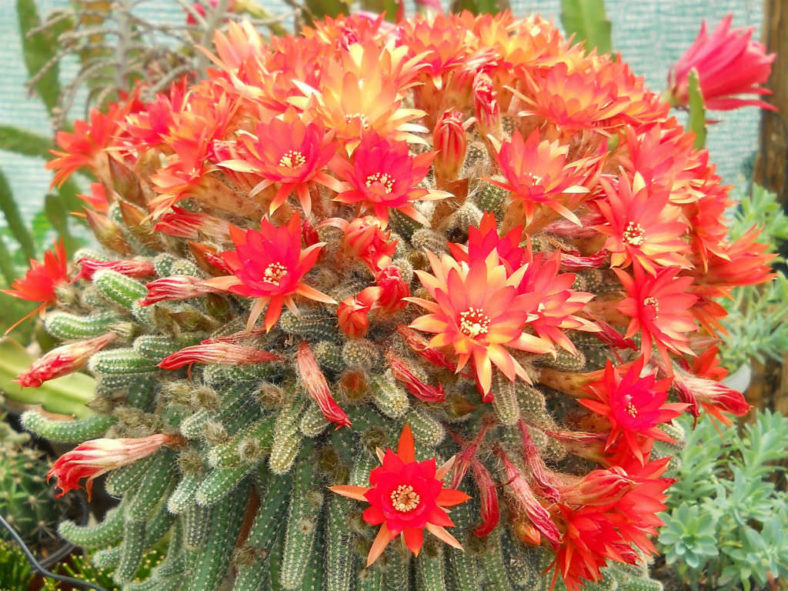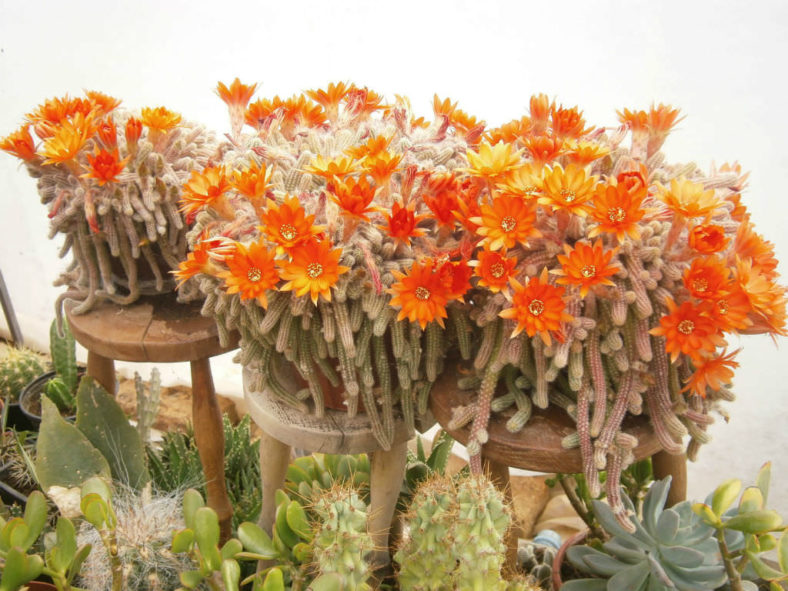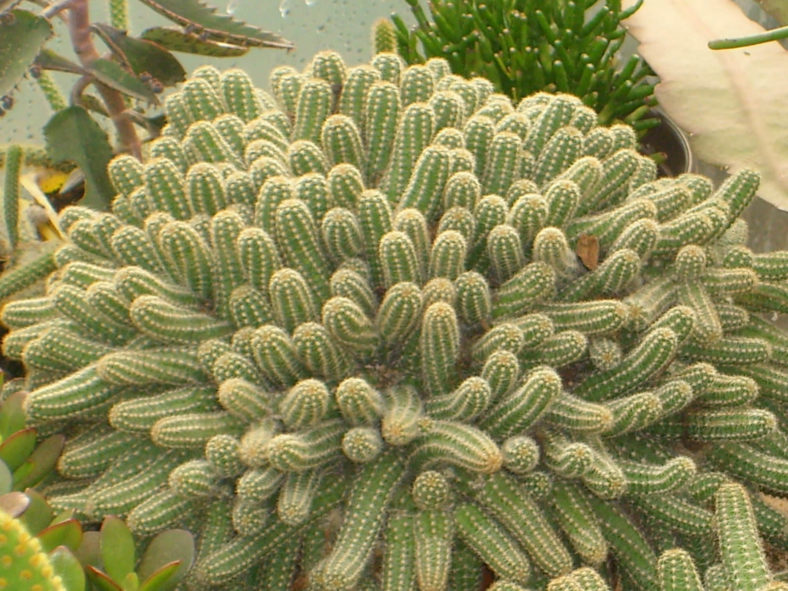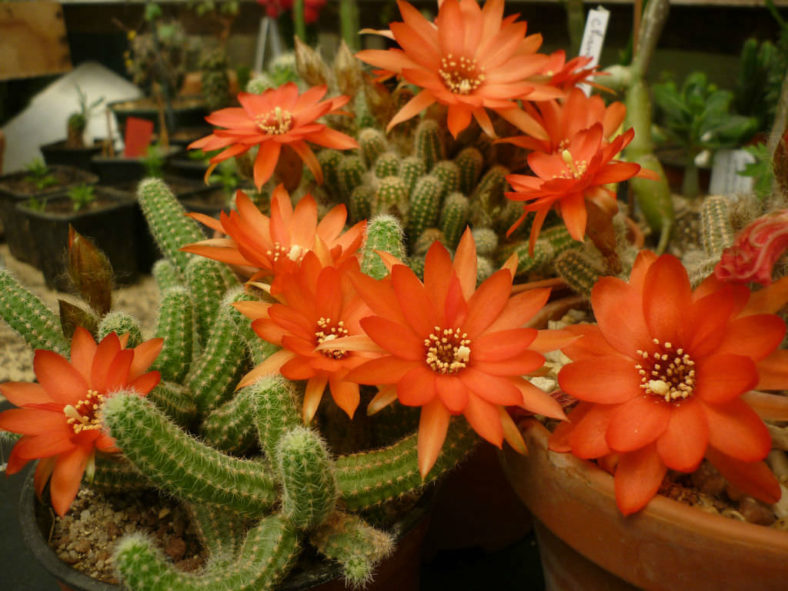Carlo Luigi Spegazzini first collected this cactus in 1896 in the mountains between the provinces of Tucuman and Salta, Argentina. In 1905, he described it as Cereus silvestrii. Later, it was reclassified by Nathaniel Lord Britton and Joseph Nelson Rose to Chamaecereus silvestrii. This name was used until 1983, when Heimo Friedrich and Wolfgang Glaetzle renamed it Echinopsis chamaecereus. Despite this change, many people continued to use the name Chamaecereus silvestrii. Fortunately, the Global Biodiversity Information Facility, World Flora Online, and Plants of the World Online now recognize it again as Chamaecereus silvestrii.
Scientific Name
Chamaecereus silvestrii (Speg.) Britton & Rose
Common Name(s)
Peanut Cactus
Synonym(s)
Cereus silvestrii, Echinopsis chamaecereus, Lobivia silvestrii
Scientific Classification
Family: Cactaceae
Subfamily: Cactoideae
Tribe: Cereeae
Subtribe: Trichocereinae
Genus: Chamaecereus
Etymology
The specific epithet "silvestrii" (pronounced "sil-VEST-ree-eye") honors Filippo Silvestri (1873-1949), an Italian entomologist and friend of Carlo Luigi Spegazzini.
Origin
Chamaecereus silvestrii is native to Argentina (Tucumán).
Description
Chamaecereus silvestrii, also known as Echinopsis chamaecereus, is a branched cactus with many crowded, pale green, finger-like stems. It can grow up to 6 inches (10 cm) tall, while the stems can measure up to 6 inches (15 cm) long and 0.5 inches (1.2 cm) in diameter. The stems have 8 to 10 ribs and 10 to 15 soft white bristles per areole.
The orange-red flowers can reach a diameter of 2 inches (5 cm). Several flushes of flowers appear from late spring to early summer.

Forms of Chamaecereus silvestrii
Hybrids of Chamaecereus silvestrii
- ×Chamaelobivia 'Annie'
- ×Chamaelobivia 'Arlequin'
- ×Chamaelobivia 'Boom'
- ×Chamaelobivia 'Captain Jessop'
- ×Chamaelobivia 'Yellow Bird'
- ×Chamaelobivia 'Rose Quartz'
- ×Chamaelobivia 'Rot Violet'
- ×Chamaelobivia 'Violet'
- ×Chamaelobivia 'Westfield Alba'
How to Grow and Care for Chamaecereus silvestrii
Hardiness: USDA hardiness zones 10a to 11b: from 30°F (-1.1°C) to 50°F (10°C).
Peanut Cactus needs a well-draining potting mix. Water the plant thoroughly until water runs out of the pot's holes, and let the soil dry at least halfway down the pot before watering again. In winter, decrease or withhold water. The plant will look shriveled, and stems can take on a reddish tinge, but the Peanut Cactus will plump up again and return to its normal color in spring.
This cactus grows well in hanging baskets or shallower, 4-inch (10 cm) nursery containers because it is shallow-rooted. Hybrids can take deeper pots. It is difficult to transplant older clumps of Peanut Cactus because the stems break apart so easily. Fertilize the cactus once a year during the growing season using a balanced fertilizer at half the recommended strength. In areas with hot, dry summers, grow Peanut Cactus in spots that get partial shade. In areas with cool summers or temperate climates, grow it in full sun.
Learn more at How to Grow and Care for Echinopsis.
Links
- Back to genus Chamaecereus
- Succupedia: Browse succulents by Scientific Name, Common Name, Genus, Family, USDA Hardiness Zone, Origin, or cacti by Genus
Photo Gallery
Click on a photo to see a larger version.


